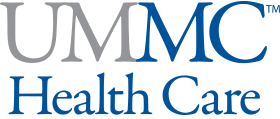Heart
- Heart Home
- Adult Congenital Heart Program
- Advanced Heart Failure
- Cardiac Imaging
- Cardiac Rehabilitation
- Cardiac Wellness and Management Clinics
- Cardiothoracic Surgery
- Chest Pain and Heart Attack Care
- Diagnostic Testing and Screening
- Heart Valve Disease
- High Blood Pressure
- Interventional Cardiology
- Jackson Heart Study
- Patient Support Groups
- Vascular and Endovascular Surgery
Interventional Cardiology
University Heart interventional cardiologists, available 24 hours a day, use the most advanced, innovative tools and skills to manipulate tiny catheters inside blood vessels to access and repair narrowed arteries or a weakened heart muscle often caused by plaque build-up (arteriosclerosis).
These non-surgical procedures can often be performed through an artery in the wrist, allowing for same-day discharge, less discomfort, and quicker recovery. The interventional portion of the procedure is often performed at the time of a diagnostic cardiac catheterization, but may be deferred to a later date depending on individual circumstances.
Coronary angiography and angioplasty
Interventional cardiologists with University Heart offer a variety of coronary angiography and angioplasty procedures to clear blocked coronary arteries.
Coronary angiography with radial artery access: This procedure uses the radial (wrist) artery as a catheter entry point to look inside blood vessels. Contrast material is injected, and X-rays are taken for evaluation. The dye helps highlight any blockages in blood flow through the heart.
Artery angioplasty with rotablator or excimer laser: This procedure involves inserting a catheter tipped with a small high-speed drill or a laser through the artery to reach the blocked area. Depending on the procedure (performed with a rotablator or excimer laser), the device will pulverize plaque into microscopic particles or emit pulsating beams of light to vaporize the buildup and open the coronary artery.
Valvuloplasty
This minimally invasive procedure to treat mitral, pulmonic, or aortic stenosis by improving blood flow is performed in the University Heart cardiac catheterization laboratory. A catheter is guided into the chambers of the heart, and a tiny hole is created in the wall between the upper two chambers. This hole provides an opening to access the left atrium with a special balloon-tipped catheter.
The catheter is positioned so the tip is directly inside the narrowed valve. The balloon is then inflated and deflated several times to widen the valve opening. Once the opening of the valve has been widened enough, the balloon is removed. During the procedure, an echocardiogram (ultrasound of the heart) may be performed to get a better picture of the mitral valve.


